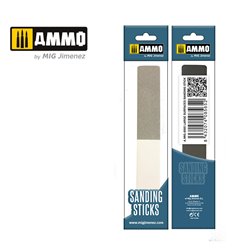There are a number of different options for attaching figures such as a horse and rider to a layout. Perhaps the...
No products
Product successfully added to your shopping cart
There are 0 items in your cart. There is 1 item in your cart.
Search Tips
What is meant by 'wet sanding' and where is it typically used?
Wet sanding is a technique used in scale modelling and other forms of modelling where a sanding medium is used in conjunction with water or a lubricant to sand a surface. The water or lubricant helps to reduce friction and prevent the sandpaper from clogging up with debris, resulting in a smoother finish.
Wet sanding is typically used on surfaces that require a high level of smoothness and finish, such as car bodies, aircraft models, and other detailed pieces. It can also be used to remove imperfections and blemishes from surfaces before painting or other finishing techniques are applied. Wet sanding is a delicate process and requires patience and attention to detail to ensure the best results.
For example, when building a model car, wet sanding can be used to smooth out any imperfections in the bodywork before applying a coat of paint. This can help to achieve a professional-looking finish and make the car look more realistic. Wet sanding can also be used on other parts of the model, such as the wheels or interior, to achieve a smooth and polished finish.
It is important to note that wet sanding can be messy and potentially damaging to surfaces if not done correctly. Modellers should always use the appropriate grit of sandpaper for the job and be sure to keep the surface wet and lubricated throughout the process.
One significant benefit of wet sanding is that in many ways it is a safer alternative for the modeller. Dry sanding has the potential to release large amounts of very fine dust into the air which can be inhaled by the modeller leading to various health issues. With wet sanding the presence of liquid in contact with the surface means that the technique tends to trap this dust making this a much safer alternative. Many modellers choose wet sanding specifically for this reason.
Click here to receive the tips weekly in your mailbox. You can unsubscribe at any time.










